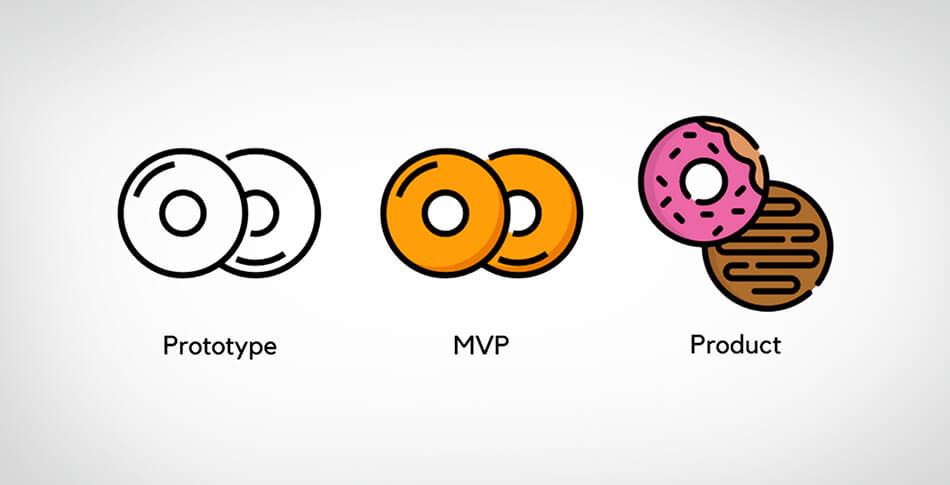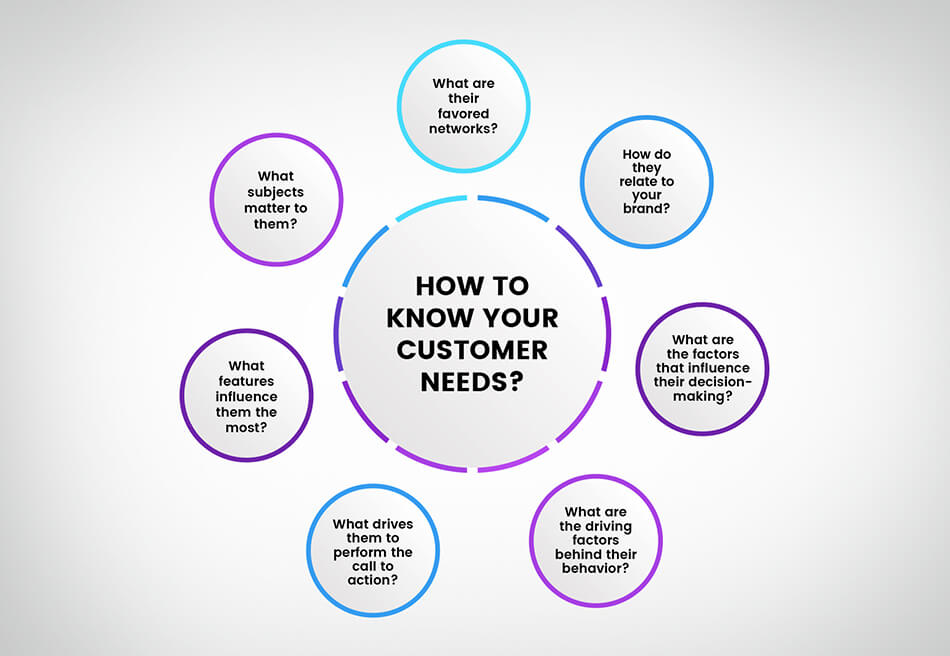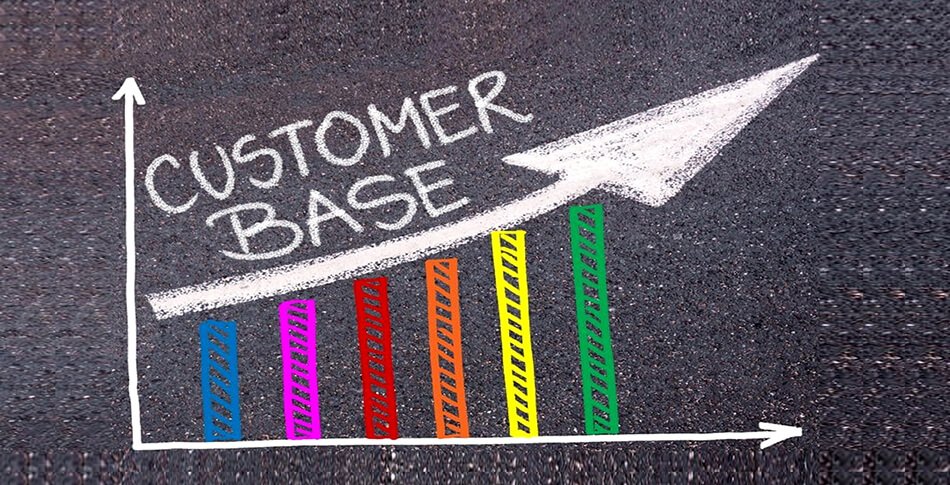Making MVP before a full-fledged product. Why is it necessary?
If I ask you to name a few of the most successful apps that are currently prevailing in the ‘app world,’ what apps will come to your mind?
You would think about Amazon, Instagram, Facebook, Snapchat, Spotify, Zappos, Uber, and so on. But do you know what they all have in common?
In case you have not already guessed, let me tell you….
They all started as a Minimum Viable Product (MVP) before going on as a full-fledged product.
Why you ask. Well, this article will tell you all about it. From MVP meaning to why it is necessary for any product, I will cover all the aspects of this app development approach.
But before I begin, let me first tell you a small story so that you can easily fathom the importance of MVP for any product.
Why MVP – A Story
A few years back, there was this guy who had the vision to open up an “everything store.” But he was smart and ambitious at the same time.
He knew that he could not do it in a single day. He did not want to put it all out there, risk all his assets, and achieve what he wanted overnight. It was a lot to ask for!
So, what did he do? Yes, you guessed it right! He followed the route of Minimum Viable Product!
He just decided to get things started and see where it goes. Initially, he only launched an online bookstore. It allowed him to show his target audience a glimpse of what he had in store for them. He claimed and obliged.
He provided his audience an accessible-to-all platform for easy buying and timely shipments. And that too, without a big investment.
And where is that MVP now? Well, now we all know it as Amazon!
Do you see where I am going with this? It all started with just a minimum viable product, and look where it is now! It is the place where people from all across the world go shopping.
From a needle to appliances – Amazon is where everybody goes for all their needs.
But What is MVP?

MVP stands for Minimum Viable Product and has been one of the greatest assets for businesses out there. Although at first, it was initiated in the world of startups, this concept is now used by companies of all shapes and sizes.
The term MVP was first used by Eric Ries, the author of The Lean Startup. He defined it as: “Minimum Viable Product is that version of a new product which allows a team to collect the maximum amount of validated learning about customers with the least effort.”
Too heavy? Well, let me explain the concept in simpler and easier words.
Minimum Viable Product can be defined as the minimal version of your product. Well, obviously! That’s what it says in the name.
But the concept of Minimum Viable product is often misunderstood. People usually assume that it refers to an incomplete or unfinished product. On the contrary, it is only a limited version of your final product.
Look at this to understand it better:

You can see that the MVP has all the fundamental features of the final product but in a simpler and basic manner. Well, that’s exactly what MVP is!
It is an approach to developing and managing a product that allows you to have early feedback from the customers, resulting in minimum risk.
Why is MVP important?

So why should you follow this approach of developing a minimum viable product before launching a full-scale product?
Well, there are oh-so-many reasons behind it. It is one of the most beneficial product management concepts that help you in numerous ways, mainly when you are introducing a new product into the market.
Let us discuss some of the most helpful benefits of developing a minimum viable product at the early stage of your project.
-
Encourages cost-efficiency
Who doesn’t want to cut costs? I know, like me, you are also always looking for ways to reduce the costs when developing an app or product.
By creating and releasing an MVP, you are not only increasing your cost-efficiency, but you are also saving yourself from the expenses of rework on the project.
When you limit the number of features to develop in the MVP, you also limit the cost and the resources that go into the development. The minimum viable product also keeps it from becoming too much complex, keeping the costs low.
-
It takes lesser time to develop
I think you would agree that we live in quite a competitive world. You snooze, and you lose! It might have been a phrase in the past years, but now it is the reality.
You do not want to be spending months developing your product as your competitor might beat you to it. And you definitely don’t want to be late for the party, right?
That is why building an MVP is the best option. By keeping the product restricted to core features, you reduce the development time by a lot. As a result, you get to have a speedy release of your product.
An MVP can provide you with a significant competitive advantage over others in the market. And trust me, it can play a huge role in the eventual success of your product.
-
Real-Time and genuine user feedback

It is a well-established fact that feedback from your customers helps you improve your product. However, the feedback can only help you if it reaches you at the right time. Once you have invested all your resources into developing a full-fledged product, any feedback asking for alterations may seem challenging.
Here is the point when an MVP can help you out! An MVP allows you to have real-time and genuine feedback from actual users before you roll out your fully-developed product.
-
It lets you connect with your customers at the initial stages

What could be better than knowing the room for improvement in your product at the initial stages, right? Nobody wants to carry out the whole procedure, only to redo it later.
And who could be better to test and review your product than your target audience.
An MVP provides you with a platform to connect with your users and potential users. Connecting with users allows you to know their needs, learn how your product is lacking, and then making the amendments accordingly.
In addition to that, building an early relationship with customers allows you to engage new stakeholders and users at the initial stage of the whole development procedure.
-
You get to know what your customer wants from you

What is the objective of any product that is created? To provide a solution for your customers’ needs, right?
In order to provide for your customers’ needs, you must know them! And MVP is all about that!
Creating an MVP provides an opportunity for your clients to test the product and tell you about what works and what doesn’t. Once the early adopters of your product give their valuable feedback, you will know if your product is workable for your target audience.
If not, you can easily make the alterations in the simplified MVP version.
-
Enhances your customer base

This may be just a bonus advantage of MVP because of all the above-mentioned primary benefits delivered by an MVP.
Reaching the market sooner, engaging earlier with the customers, providing core features with a simplified user interface – what more could a user ask for?
And that is the reason why, when you roll out an MVP, it significantly affects and enriches your customer base.
Moreover, you don’t only acquire the early adopters from the market, but you also gain many new clients because of the word-of-mouth advertising.
-
It allows more flexibility

This is a fast-paced and highly demanding world that we live in. any product requires constant updates and modifications in order to stay relevant and helpful for the users.
In case your product is not flexible enough, it may soon be replaced with a better version.
Building an MVP instead of a full-scale product allows you to be flexible and responsive to keep in sync with this ever-evolving world. It gives enough space for constant updates and new features to be added.
Moreover, you can keep adding any newer technology or tools your customers ask for without having to perform large amounts of rework.
-
Helps you keep your focus
When you are going on a trip for the weekend, do you keep the whole of your wardrobe in your suitcase? Or do you pack only the things you require for the trip?
Only the essentials, right?
That’s exactly what you do by creating an MVP. An MVP enables you to keep your focus on only the core functionalities of your product. It provides you with clarity of vision, keeping you from adding complex and unnecessary features to the product.
When you create an MVP, it is quite easy to keep your focus because you are only working on a few core functionalities. On the other hand, when you are working on a full-fledged app, it is very easy to lose your attention and get pulled into working on unneeded features.
-
Minimum risk
Developing a full-fledged app is not for the faint-hearted!
It requires months (sometimes even years) of effort, time, and resources to develop a polished large-scale app or product. And we all know the fact: the more the effort, the more the risk.
However, that is not true for MVPs, as this approach allows room and space for any changes that a client might ask for. All thanks to the simple MVP version, where any alteration can be made easily.
-
A more user-friendly interface
Being a user, if there is one thing that is a must-have for me in any app, it has to be a user-friendly interface. No matter how tech-savvy a person is, having a cluttered interface loaded with unnecessary features and graphics can put them off and take them away from your website.
And nobody wants to lose their customers, right?
Stress not! MVP approach prevents you from adding too many features, keeping your interface clear and user-friendly.
-
Attracts investors sooner
Investors demand to know where their money is going before they invest in any project, and we really do not blame them!
The stats are not very good when it comes to the success rate of startups. Around 90% of all new startups fail!
If you present your clients with a simplified and focused MVP, it will certainly attract them and help them make an informed decision. It provides them with a practical product that they can use and test on their own. So, MVP does attract investors by gaining their trust and making them interested in the product.
-
Market Validation
I would say that getting market validation has to be the biggest advantage of creating an MVP. When you are developing an app or product, you usually assume that the market will welcome it with open arms. However, sometimes that’s not the case!
The product you launch may not get the welcome that you anticipated. Whatever the reason behind it, the risk involved in launching a full-fledged product is far greater than that of generating an MVP.
It allows you to know what the market really demands without spending all your resources on it. By developing the minimum viable product and launching it to the market in a short time, you can know what your customers demand from you.
-
It saves you time and resources
Imagine this: you have spent months developing a product. You have devoted all of your resources to it.
You have spent huge sums of money along with your valuable time (maybe months or even years) on it. And when you launch this fully-developed product in the market, you realize that it was actually not what your customers wanted from you!
Now what? Does all your money, time, and energy go to waste? Do you redo all the work, adding to the expenses? Well, that’s a scenario you can escape from by developing an MVP for your product.
-
Some Successful Cases of MVPs
Following the minimum viable product, the approach has been followed by various startups that are now household names. We all know about these products that first started out as MVP. Some of the most successful cases of MVPs include:
- Amazon
- Airbnb
- Zappos
- Etsy
And the list goes on…
But you get the idea, right? Now, you know why MVP is the route to take if you want your product to reach this level of success!
Is Minimum Viable Product Necessary?
Well, theoretically, it is not!
But have you looked at the advantages of developing an MVP? Well, let me tell you, those benefits are just the tip of the iceberg! Developing an MVP makes a world of difference to your project.
Let me tell you that building a minimum viable product before launching a full-scale product is one of the smartest moves you can make!
It will help you test your product idea in real market conditions without having to risk it all. We have all heard about what happened to the guy who kept all his eggs in in one basket. You don’t want that to happen to you, right?
So, developing a minimum viable product is definitely necessary if you have something new to offer to the market. It will help you see if your idea is valid, if your product is viable, and what your customers demand from it. And that too, with minimum risks involved!
In Conclusion – MVP for the win!
Developing a minimum viable product is the way to go when you are about to launch a new product in the market. It simply means creating the most basic version of your idea.
It will not only help you save time, costs, and resources, but it will also let you know about customers’ feedback beforehand.
Developing any new product is a learning process, and building an MVP is the best way to learn.
So, build wisely, one step at a time! Do not go all the way before knowing if it is all really worth it! After all, it is best to test the waters before diving headfirst into the ocean, right?
Get a Free Quote
+1 845 3770255
Call on anytime
To discuss your project










